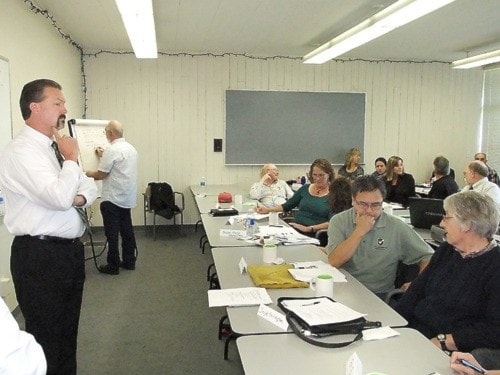“We really need to have a strong social planning and education training component in the Valley. There are bits and pieces of that, but overall we’re lacking the comprehensive planning we’re going to need for the next few years.”
That was the conclusion Ted Richardson came to following an adult education strategic planning workshop held Oct. 6 at the Community Resource Center in Clearwater.
“If Yellowhead Mine goes ahead, we’d better fast track things as much as possible.”
About 30 people from a wide variety of organizations took part, including Thompson Rivers University, Clearwater Employment Services, Yellowhead Mining, District of Clearwater, District of Barriere, M.P. Cathy McLeod’s office, Ministry of Forests, Lands and Natural Resources, School District 73, North Thompson Community Foundation, Wells Gray Community Forest, United Way, Yellowhead Community Services and the Community Resource Center.
Ray Sanders, director of Thompson Rivers University’s Williams Lake campus and TRU’s regional center director, facilitated the meeting.
The day started with presentations from Community Resource Center manager Sylvia Arduini and Yellowhead Community Services executive director Jack Keough, who outlined the background on how the CRC is now a business unit of YCS.
Sanders talked about how the Williams Lake campus is moving forward to meet the demands of its community.
The afternoon discussion centered on what are the adult education needs of the Valley.
University of Northern British Columbia researcher Don Manson pointed out the value of doing things on a valley-wide basis, rather than community by community.
TRU dean of science talked about plans to upgrade the education and research facility next to Wells Gray Park with a new building.
“There are synergies in what’s being offered here at the CRC and what could be offered here, and what would be offered at the new facility,” Richardson observed.
Non-timbe forest products might be one area of mutual interest.
The Community Resource Center is now a social enterprise, Richardson said. Money that came to the CRC after the wildfires of 2003 is now gone and the facility must survive by finding contracts with governments and other sources of funding.
